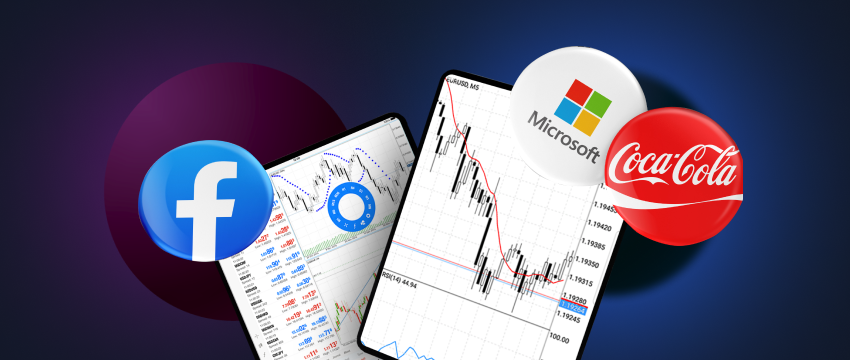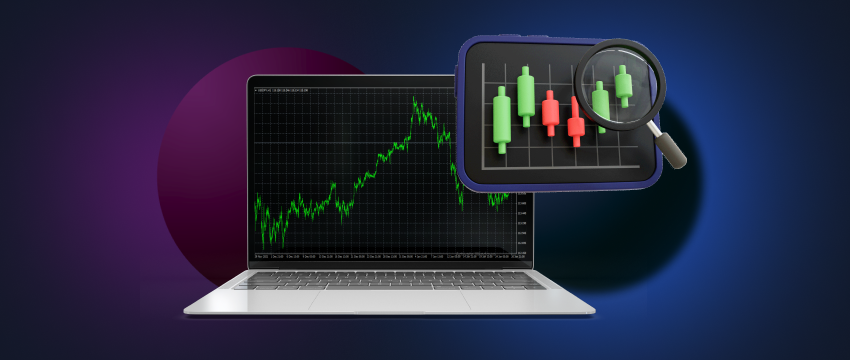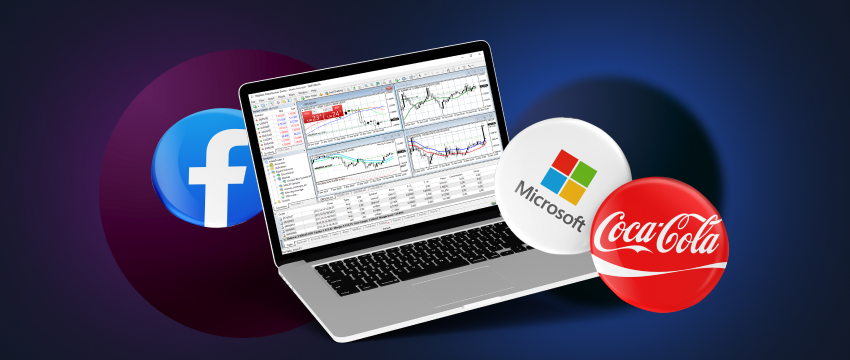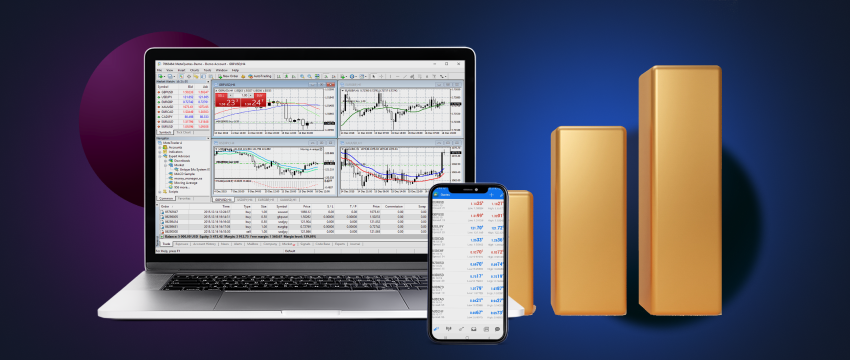The principles by which to start trading are relatively common across most financial instruments. Regardless of whether it’s stocks, forex, commodities, indices, etc., proper planning and the right knowledge are key to getting started. So, let’s explore what you need to start trading stocks in particular.
Understanding stocks
Stocks represent ownership of a fraction of a company. By holding stocks in a business, you become a shareholder with specific rights that those stocks afford. Being a shareholder doesn’t necessarily make you an owner of the company, instead, you have ownership of a portion of the company’s shares. Stocks are usually purchased and sold on stock exchanges, for example, New York Stock Exchange, Nasdaq, etc.

Why are stocks traded?
Stocks are commonly issued as a way for a company to raise funding, research and development, expansion of business operations, and so forth.
For a trader, stocks offer several benefits too. This includes:
- growing your savings (multiplying wealth)
- earning a return on investment (ROI)
- protecting your money from inflation
- no cap on potential earnings
- diversifying your investment portfolio
Common risks involved in trading stocks
The value of stocks can be impacted by a variety of factors. Commodity price risks are quite prevalent for a company selling commodities. Should the price of a particular commodity dramatically fall for whatever reason, so too may the value of the company’s shares.
Headline risk is another factor impacting stock prices. Bad news against a specific company or industry can lead to market backlash, resulting in dramatic price fluctuations. Rating risk involves the shift in the credit rating of a company.
Regardless of what direction that rating moves, the value of the company’s shares may be impacted as well. Legislative risk is when a change in law or regulation impacts how a company is able to operate. If the change has the ability to adversely impact how a company operates, the value of its stocks may decline as a result.

Building up to trading stocks
CFD stock trading is a popular way of trading stocks. Rather than purchase stocks directly, a trader will enter into a CFD with a broker, through which they will speculate the price movement of the underlying asset (the stock).
Based on the speculation, the trader will either go long (buy) or short (sell). CFD trading is highly leveraged, meaning traders can control a larger position with a smaller sum of capital. While leverage may maximise profits for someone with a lower budget, it also has the potential to amplify losses.
There are several steps in the process of diving into CFD stock trading.
Establishing your financial goals
First and foremost, establishing your financial goals is vital. This entails asking yourself whether this will be a short-term endeavour or a long-term investment plan. You’ll also need to consider your budget and probably most importantly your tolerance for risk. Remember, trading, regardless of the instrument, is highly risk and the potential for losing all your money is high. Therefore, ensure your financial goals align with how much money you have to invest and the sum you’re willing to possibly lose.
Learn about CFD stock trading
Secondly, ensure you learn everything there is to learn about CFD stock trading. You must have a proper understanding of what this form of trading involves, as well as familiarize yourself with stock market terminology. In addition, it is very important to know the basics of stock analysis, namely technical analysis and fundamental analysis. For reference, fundamental analysis refers to the study of a company’s earnings reports, financial statements and overall financial health. Technical analysis on the other hand involves analysing historical price charts and patterns in order to be able to speculate on future price movements, an essential part of CFD stock trading.
Trading Education
Third, ensure you invest a portion of your time in some form of trading education. There are a plethora of educational resources available for free online to help you gain a solid understanding of CFD stock trading. Be this books, blogs, online courses, podcasts, seminars, an abundance of information exists to help you become a more informed trader.
CFD stock trading plan
Fourth, and probably of of the most important steps, is to build a concrete CFD stock trading plan. The plan should define the trading strategy you’re looking to adopt and the risk management techniques you’ll employ to safeguard your funds. Sticking to the plan is key to remaining focused.
Select CFD broker
Fifth is choosing a CFD broker who will help you achieve your trading goals. Ensure the broker is one that comes with a robust reputation and is regulated preferably. The broker should also strive to provide you with the learning tools needed to make informed trading decisions. In addition, they should also offer a top-tier level of customer support 24/5 to ensure an optimal trading experience for you.
Open a demo account and start your trading journey
Sixth, if you’re new to CFD stock trading, signing up for a demo trading account is highly recommended. A demo account offers the opportunity for you to learn more about how trading works without putting your own funds at risk. You will make use of a simulated trading environment to execute trades, practice technical and fundamental analysis, assess outcomes and make adjustments. Making use of virtual funds provides a way for you to confidently try out different trading strategies to see which one best caters to your trading needs and goals.
By using a demo trading account for enough time, you will gain the experience, knowledge and confidence necessary to move to a live trading account. If you haven’t yet signed up for a demo trading account, consider doing so with T4Trade to boost your skills and expertise in order to become a successful trader.

How to start trading stocks
Now that you’re at the point where you want to start trading for real, you’ll need to do as follows:
- Choose your broker, e.g. T4Trade
- Open a CFD account and pick your CFD market.
- Decide whether to go long (buy) or short (sell) on a trade. This will be based on the price movement of the underlying asset (i.e. the stock).
- Select your trade size (the number of contracts you want to buy or sell).
- Establish whether you’ll make use of leverage.
- Consider adding a stop-loss order to limit the risk of losing too much of your capital.
- Monitor your positions.
As we already mentioned, don’t forget that CFD trading carries a high level of risk, especially when using leverage. A well-thought-out trading plan and effective risk management strategies are essential to reducing the risk of losing your capital
Start trading forex with T4Trade
T4Trade is a popular broker, used by traders across the globe for a variety of reasons. This includes a secure trading environment, flexible leverage, competitive spreads, fast withdrawals and deposits, and quick execution speeds. Traders can also trade more than 300 financial instruments across several asset classes like stocks, forex, metals, commodities, futures, indices, etc. T4Trade broker also offers several different trading accounts to ensure the needs of traders of all skill levels are met.
This is complemented by 24/5 multilingual customer support delivered through multiple channels such as live chat, telephone, and email, as well as an informative FAQ page. Traders can also access extensive educational resources to learn CFD stock trading in their preferred style of learning.
Disclaimer: This material is for general informational & educational purposes only and should not be considered investment advice or an investment recommendation. T4Trade is not responsible for any data provided by third parties referenced or hyperlinked, in this communication.


